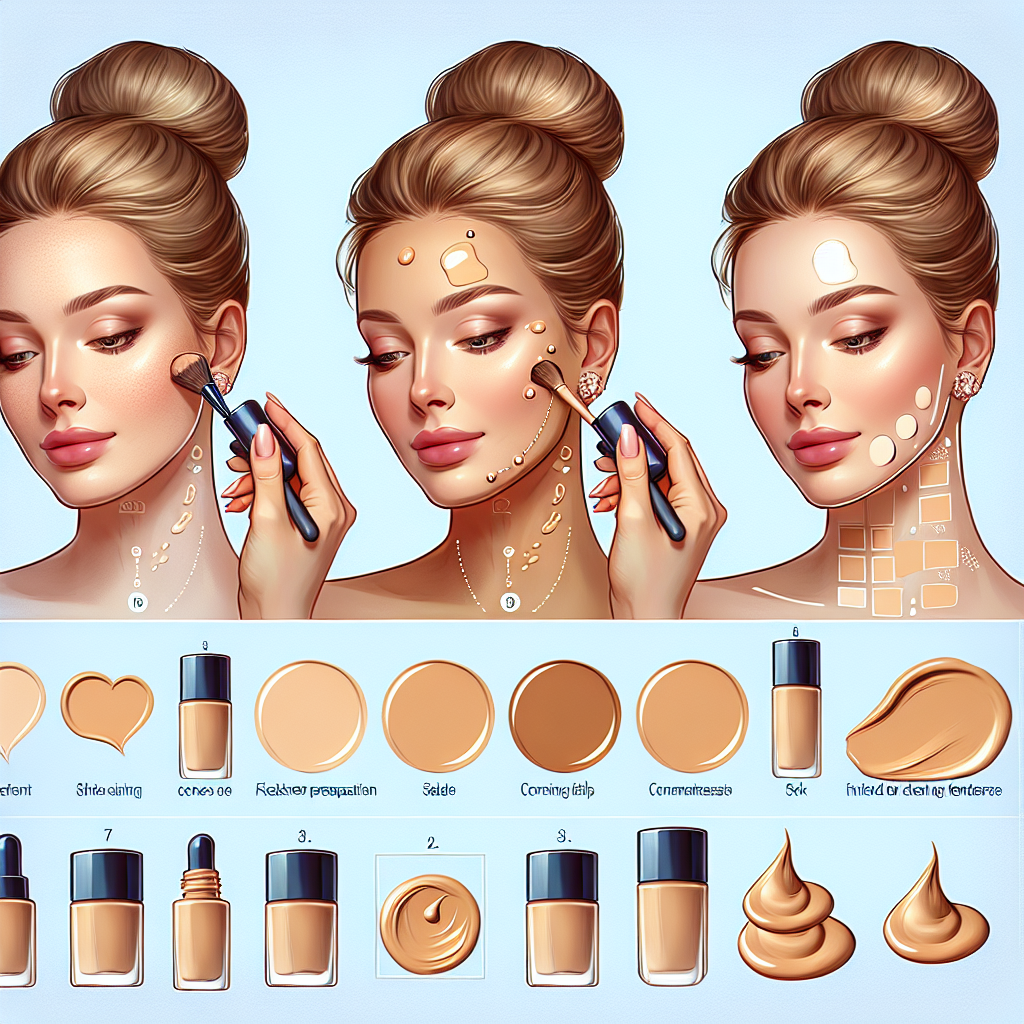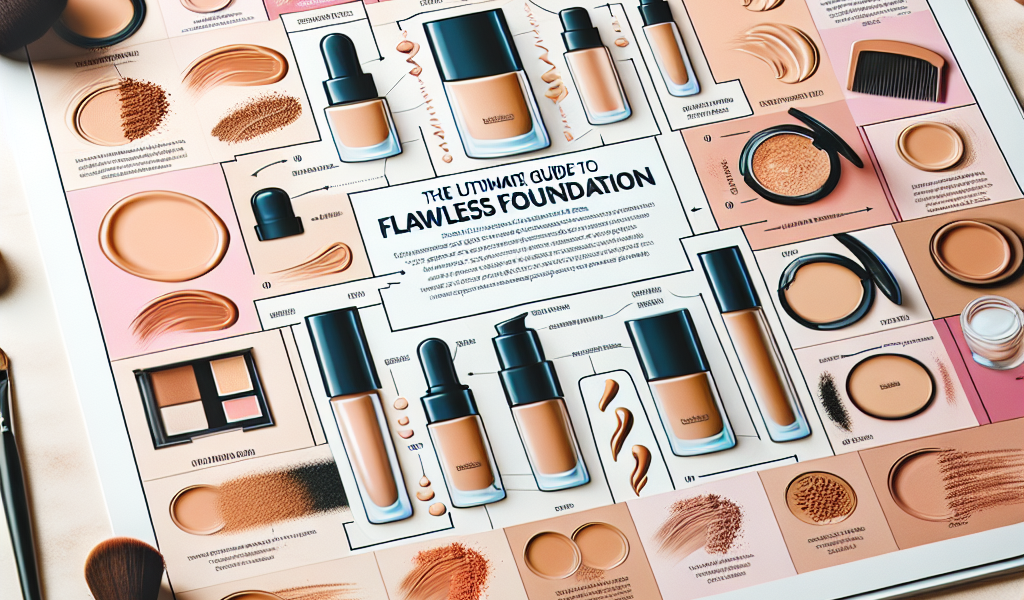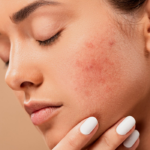-
Table of Contents
“Achieve Perfection: Your Path to Flawless Foundation”
Introduction

“The Ultimate Guide to Flawless Foundation” is an essential resource for anyone seeking to achieve a perfect complexion. This comprehensive guide delves into the intricacies of selecting the right foundation for various skin types, tones, and textures. It offers expert tips on application techniques, product recommendations, and common mistakes to avoid. Whether you’re a makeup novice or a seasoned beauty enthusiast, this guide provides valuable insights to help you create a smooth, even, and radiant base for any makeup look.
Choosing The Right Foundation Shade For Your Skin Tone
Choosing the right foundation shade for your skin tone can be a daunting task, but it is an essential step in achieving a flawless complexion. The foundation serves as the base for your entire makeup look, and selecting the wrong shade can lead to an unnatural appearance. To ensure you find the perfect match, it is important to understand your skin’s undertone, test the foundation in natural light, and consider the season and your skin type.
First and foremost, identifying your skin’s undertone is crucial. Undertones fall into three main categories: cool, warm, and neutral. Cool undertones have hints of pink, red, or blue, while warm undertones exhibit yellow, golden, or peachy hues. Neutral undertones are a balanced mix of both. To determine your undertone, examine the veins on your wrist. If they appear blue or purple, you likely have cool undertones. If they look green, you probably have warm undertones. If you find it difficult to decide, you may have neutral undertones.
Once you have identified your undertone, it is time to test the foundation. Many people make the mistake of swatching foundation on their hand or wrist, but the skin on these areas can differ significantly from the skin on your face. Instead, apply a small amount of foundation along your jawline and blend it in. This area provides a more accurate representation of how the foundation will look on your face. Additionally, always test the foundation in natural light, as artificial lighting can distort the true color.
Another factor to consider is the season. Your skin tone can change with the seasons, becoming lighter in the winter and darker in the summer due to sun exposure. It is a good idea to have two foundation shades on hand: one for the warmer months and one for the cooler months. This way, you can mix and match to create a custom shade that suits your skin tone year-round.
Your skin type also plays a significant role in choosing the right foundation. If you have oily skin, opt for a matte or oil-free foundation to control shine and prevent breakouts. For dry skin, a hydrating or dewy foundation will provide much-needed moisture and a radiant finish. Combination skin can benefit from a foundation that offers a balance between matte and dewy, ensuring that both oily and dry areas are addressed.
When shopping for foundation, do not be afraid to ask for samples. Many beauty stores and counters offer samples that allow you to test the product at home before committing to a full-size purchase. This is especially helpful if you are trying a new brand or formula.
In conclusion, choosing the right foundation shade for your skin tone involves understanding your undertone, testing the product in natural light, considering seasonal changes, and taking your skin type into account. By following these steps, you can find a foundation that seamlessly blends with your skin, providing a flawless and natural-looking base for your makeup. Remember, the key to a perfect foundation is not just about the color but also about how it complements and enhances your unique complexion.
Step-By-Step Application Techniques For A Flawless Finish
Achieving a flawless foundation is the cornerstone of any great makeup look, and mastering the application techniques can make all the difference. The journey to a perfect base begins with proper skin preparation. Start by cleansing your face to remove any dirt or oil, followed by a hydrating moisturizer to ensure your skin is plump and smooth. This step is crucial as it creates a seamless canvas for your foundation, preventing it from clinging to dry patches or settling into fine lines.
Once your skin is prepped, the next step is to apply a primer. Primers work wonders in blurring imperfections, minimizing pores, and extending the longevity of your foundation. Choose a primer that suits your skin type; for instance, a mattifying primer for oily skin or a hydrating one for dry skin. Apply a small amount evenly across your face, focusing on areas where your makeup tends to wear off quickly.
With your skin primed and ready, it’s time to select the right foundation. The key to a flawless finish lies in choosing a foundation that matches your skin tone and type. Test a few shades on your jawline to find the perfect match, and opt for a formula that complements your skin’s needs, whether it’s a dewy finish for dry skin or a matte finish for oily skin.
Now, let’s move on to the application. Using a damp makeup sponge or a foundation brush, start by applying a small amount of foundation to the center of your face. This area typically requires the most coverage, and you can blend outwards to avoid a heavy, cakey look. Dab the foundation onto your skin and blend it in using gentle, tapping motions. This technique helps to build coverage gradually and ensures a natural, airbrushed finish.
For areas that need extra coverage, such as blemishes or under-eye circles, use a concealer. Choose a concealer that is one to two shades lighter than your foundation for brightening the under-eye area and one that matches your foundation for covering blemishes. Apply the concealer in a triangular shape under your eyes and blend it out with a damp sponge or brush. For blemishes, dab a small amount directly onto the spot and blend the edges to seamlessly merge with your foundation.
To set your foundation and concealer, use a translucent setting powder. Lightly dust the powder over your face with a fluffy brush, concentrating on areas that tend to get oily, such as the T-zone. This step helps to lock in your makeup and control shine throughout the day. If you have dry skin, you may want to skip this step or use a minimal amount to avoid a dry, powdery finish.
Finally, to add dimension and bring life back to your face, apply a touch of bronzer, blush, and highlighter. Sweep bronzer along the hollows of your cheeks, temples, and jawline to create a subtle contour. Add a pop of blush to the apples of your cheeks for a healthy flush, and finish with a highlighter on the high points of your face, such as the cheekbones, brow bones, and the bridge of your nose.
By following these step-by-step techniques, you can achieve a flawless foundation that enhances your natural beauty and provides a perfect base for the rest of your makeup. Remember, practice makes perfect, so take your time to experiment with different products and methods to find what works best for you.
Essential Tools And Products For Perfect Foundation Application
Achieving a flawless foundation is often considered the holy grail of makeup application, and the right tools and products can make all the difference. To start, selecting the perfect foundation for your skin type and tone is crucial. Whether you have oily, dry, or combination skin, there is a foundation formula designed to meet your specific needs. For instance, those with oily skin might benefit from a matte foundation, while individuals with dry skin may find a hydrating formula more suitable. Once you have identified the right foundation, the next step is to gather the essential tools for application.
A high-quality primer is the first tool in your arsenal. Primers create a smooth canvas by filling in pores and fine lines, ensuring that your foundation glides on effortlessly and stays put throughout the day. Silicone-based primers are excellent for creating a silky texture, while water-based primers are ideal for those with sensitive skin. After applying primer, the choice of applicator becomes paramount. Brushes, sponges, and even your fingers can be used to apply foundation, each offering a different finish.
Foundation brushes, particularly flat-top kabuki brushes, are excellent for achieving a full-coverage look. They allow for precise application and can be used to buff the foundation into the skin, creating a seamless finish. On the other hand, makeup sponges, such as the popular Beauty Blender, are perfect for a more natural, dewy look. When dampened, these sponges help to blend the foundation evenly, preventing any streaks or lines. For those who prefer a quick and easy application, using fingers can also be effective, as the warmth of your hands helps to melt the foundation into the skin.
Transitioning to the next step, setting your foundation is essential to ensure longevity. Setting powders and sprays are invaluable tools in this regard. Translucent setting powders help to lock in the foundation, control shine, and provide a matte finish. They are particularly useful for those with oily skin. Setting sprays, on the other hand, offer a more natural finish and can be used to refresh your makeup throughout the day. A few spritzes can help to meld all the layers of your makeup together, giving you a cohesive and polished look.
Moreover, the importance of choosing the right shade cannot be overstated. Testing foundation shades in natural light is the best way to find your perfect match. Swatching a few shades along your jawline and blending them out will help you see which one disappears into your skin. This ensures that your foundation looks natural and seamless, avoiding the dreaded line of demarcation.
In addition to these tools and products, skincare plays a pivotal role in achieving a flawless foundation. A well-moisturized and exfoliated face provides the ideal base for makeup application. Regular exfoliation removes dead skin cells, while a good moisturizer ensures that your skin is hydrated and plump. This combination helps the foundation to adhere better and last longer.
In conclusion, the journey to flawless foundation involves a combination of the right products, tools, and techniques. From selecting the appropriate foundation for your skin type to using primers, brushes, sponges, and setting products, each step is integral to achieving a perfect finish. By paying attention to these details and incorporating them into your routine, you can ensure that your foundation looks impeccable every time.
Conclusion
In conclusion, “The Ultimate Guide to Flawless Foundation” provides comprehensive insights into achieving a perfect base for makeup. It covers essential topics such as selecting the right foundation type and shade, preparing the skin, and applying the product with various tools for different finishes. The guide emphasizes the importance of understanding one’s skin type and undertone, as well as the significance of blending and setting techniques to ensure long-lasting, natural-looking coverage. By following these expert tips and tricks, anyone can master the art of flawless foundation application, resulting in a polished and radiant complexion.




